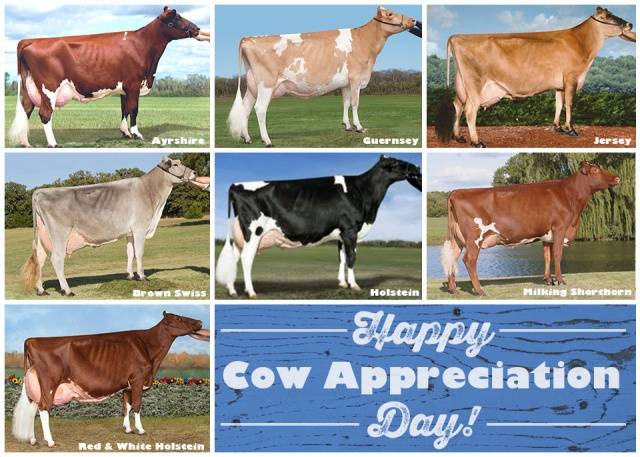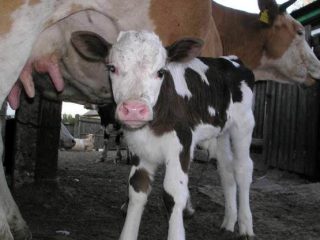Content
One of the most productive dairy breeds, taking into account the feed spent on the production of 1 liter, is the old island Jersey breed of cows. Jerseys are very economical to maintain and would be ideal for keeping in private estates, if not for some of their features that need to be taken into account. These features are a direct consequence of their origin.
History of the breed
There are no written sources about where cattle came from on the island of Jersey. Presumably the Normans brought cows there during their heyday. Most likely, Norman cattle were originally crossed with British cattle. Jersey cows were first mentioned as a breed in 1700. At the end of the 18th century, the island's authorities banned the crossing of Jerseys with other breeds. Cattle. Up until 2008, Jersey cattle were bred pure.
Like any island population of large mammals, Jersey cattle began to shrink after arriving on the island. Today, Jerseys are considered one of the smallest cattle breeds.
Description of the Jersey cow breed
From the very beginning, Jerseys were formed as a dairy breed of cows. The conditions of the island and the limited food supply left no other options. After calving, farmers immediately slaughtered the calves so as not to feed the “parasites”, but to take the milk for themselves.
Before the zoo, the calves were slaughtered and buried.
Due to its strict dairy focus, the Jersey breed of cows today still has a very low slaughter yield of meat. Even in the photo of the bull above, it is noticeable that Jersey bulls do not have any special muscles.
The height of a Jersey cow is 125 – 130 cm. On abundant feed, it often grows to the usual “cow” height of 140 – 145 cm. The average weight of cows is 400 – 500 kg, bulls – 540 – 820 kg. The upper values are hardly possible for an animal 130 cm tall.
Pictured is the original size of the Jersey cattle.
The weight of calves at birth is 26 kg. Jerseys grow quickly and at 7 months are only 3 kg behind Holstein calves. For comparison: a Jersey at 7 months weighs 102.8 kg; Holstein 105.5 kg. But Holstein cattle must grow to 150 – 160 cm!
Due to inbreeding, the frame of Jerseys is graceful and light. A distinctive feature of these cows is their large eyes with brow ridges on a small head. The facial part of the skull is shortened.
Most likely, in the family of this cow there is Holstein breed. This is the most common type of interbreeding.
The body is flat with a deep chest. The back is straight, without depressions. But this breed is allowed to have an arched back. The udder is cup-shaped.
The color of modern Jerseys is the so-called “fawn”: fawn-brown of any shade.
Also, young cows often have a bright red color, but over time they fade into the standard “deer” color.
Productive features of jerseys
The dairy characteristics of Jersey cows are higher than those of other dairy breeds. The average milk yield of Jersey females during lactation is 3000 – 3500 liters. With properly organized feeding and care in the UK, Jerseys can produce 5,000 liters of milk per year. The record milk yield in this country is 9000 liters.
The milk of Jersey cows is highly prized in the UK for its high fat, protein and calcium content. But contrary to Russian-language advertising, the fat content of milk from Jerseys is not 6 - 8%, but only 4.85%. But this is also 25% higher than the fat content in “average” milk. There is also 18% more protein in Jersey milk than in the “average” milk - 3.95%. There is a quarter more calcium. Accordingly, Jersey milk is much more healthy and profitable than milk from other breeds. Even with relatively small milk yields.
In addition, Jerseys have a good response to food. To produce 1 liter of milk, a Jersey cow needs only 0.8 feed. units.
Pros of the Jersey cow
Any breed has advantages and disadvantages. For Russia, the Jersey can be difficult to maintain due to the peculiarities of breeding the breed. But a large number of advantages of the breed outweigh the disadvantages:
- milk is rich in nutrients;
- To produce 1 liter of milk, less feed is required than for other breeds of cattle;
- productive durability;
- precocity. Many Jersey cows produce their first calf at 19 months;
- easy and fast calving. Because of this quality, Jerseys are often crossed with other breeds of cows;
- strong hooves, making Jerseys less prone to lameness;
- lower incidence of mastitis than other breeds;
- flexible and calm character.
The latter is especially important during machine milking, since a cow with a quarrelsome character often breaks milking machines by kicking them away with her feet.
The disadvantages of Jerseys include poor resistance to diseases and an increased need for microelements. Both of these are caused by the fact that the breed was bred on a small island. Due to inbreeding and the lack of need to fight diseases, there was no selection of Jerseys based on the strength of their immunity.
Features of feeding Jersey cows
On the island, livestock were often fed seaweed, plus the island's soil was saturated with trace elements found in ocean water. These trace elements enter the island during storms and when sea water seeps into the base of the island. Over the millennia, the earth has been thoroughly saturated with sea water, even if at first glance it seems that this is not the case.
On a note! The diet should have a high iodine content.
The need for iodine in Jerseys is caused precisely by eating algae washed ashore and feed grown on the sea coast.
Mini farm with dwarf cows
Some features of the breeding of Jersey cows
Although Jersey cattle are often mixed with other breeds to improve production characteristics, the Jersey bull is usually the sire. Most Jersey cows are still significantly smaller than other dairy breeds. If a Jersey cow is mated to a large bull, she may have problems at calving due to the calf being too large. On the other hand, you can also use Jerseys that have grown up on mainland feed. But only on condition that its dimensions correspond to the size of a bull.
Reviews from owners of Jersey cows
Conclusion
Jersey cattle in Russian conditions can be very profitable in the south, since the breed is quite thermophilic. This breed is also suitable for the driest regions of Russia, as it is able to get by with a minimum of feed. In the north, insulated barns will have to be built for these cattle, which will immediately increase the cost of maintaining a dairy herd. However, in the north, Jersey cattle may well be replaced by native Russian Krasno-Gorbatov breed.

















